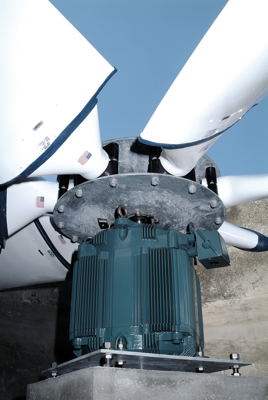Direct-drive cooling system handles 8m fans
Baldor has extended its novel direct-drive technology for controlling cooling tower fans to higher power ratings for large applications.
The technology, originally announced in 2009, eliminates the gearboxes and right-angled couplings of conventional cooling tower fan drives to save energy, improve reliability, and cut noise levels. A permanent magnet (PM) motor is used to increase efficiency dramatically, allowing a much smaller motor to fit into the space occupied by the gearbox of conventional systems.

Baldor says that the new technology is already changing the way that cooling tower fans for commercial buildings are designed. Originally the system was available in ratings from 7–145kW, for driving fans with diameters from 2.1–5.5m. The range now includes 26 models rated up to 187kW, with torque ratings up to 13.5kN, capable of driving fans up to 8m in diameter.
Cooling tower fans have traditionally been driven by AC induction motors, via disc couplings and right-angle gearboxes. The high-speed gearboxes need regular inspection and maintenance, while misalignments can cause vibration, wear and noise. The complex power transmission system introduces significant energy losses.
The new approach provides a direct slow-speed drive for the fans, combined with variable speed control. The number of moving parts is minimised, improving reliability and efficiency, while cutting system costs. The interior permanent magnet synchronous motors are much more efficient and the fan can be operated at reduced speeds when not on peak loads. The direct drive also cuts noise levels and eliminates the risk of the cooling water being contaminated by leaking gearboxes.
A specially developed speed control algorithm provides sensorless control of the PM motor, optimised to manage the large inertia of the fan, with a low starting current.
Before its launch, the new drive system was compared with a conventional cooling tower fan drive, in a building with two identical cooling towers housing 5.5m fans. Independently verified power measurements showed that direct-drive arrangement cut the input power by about 13% when running at full load.





